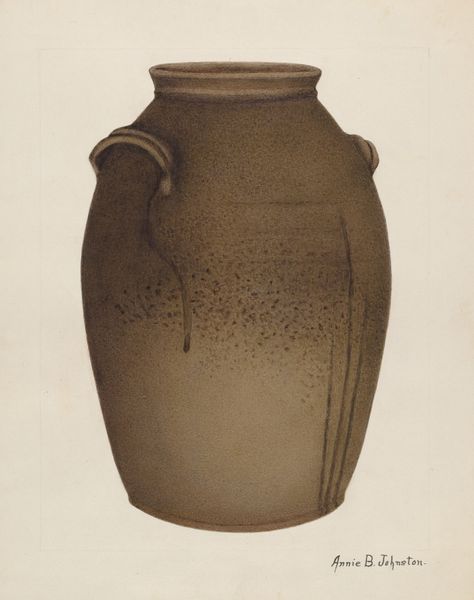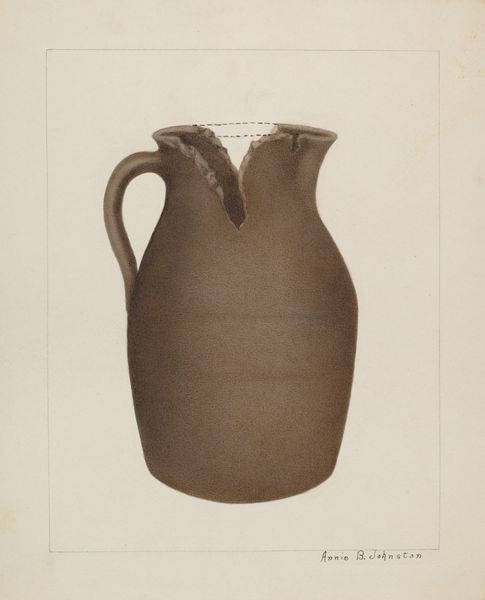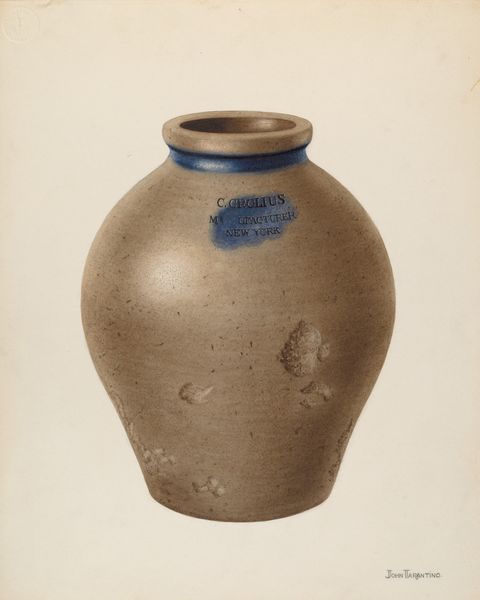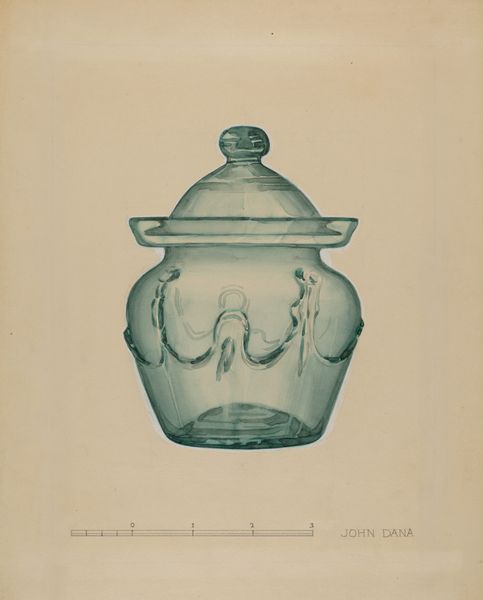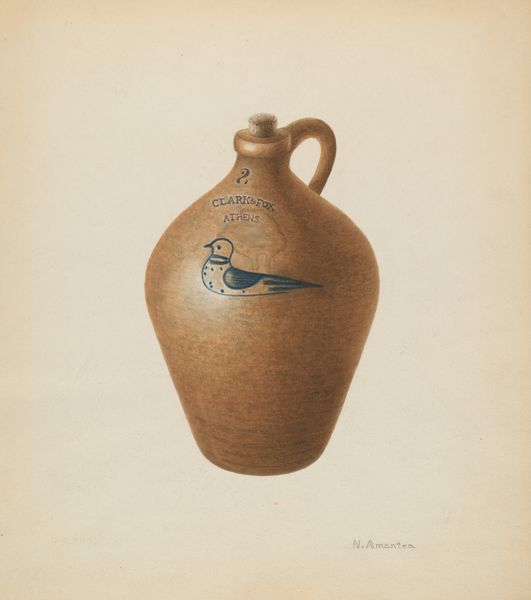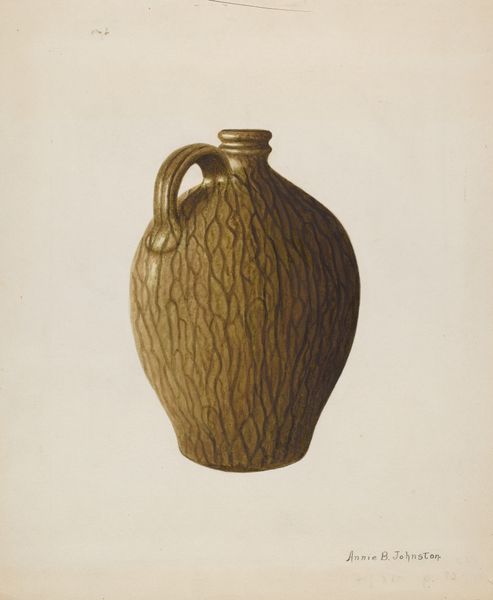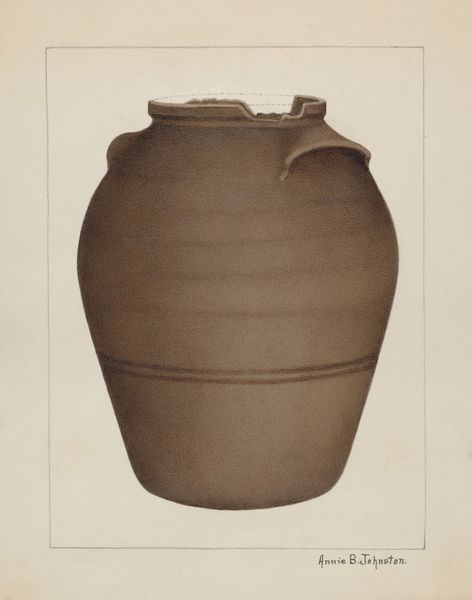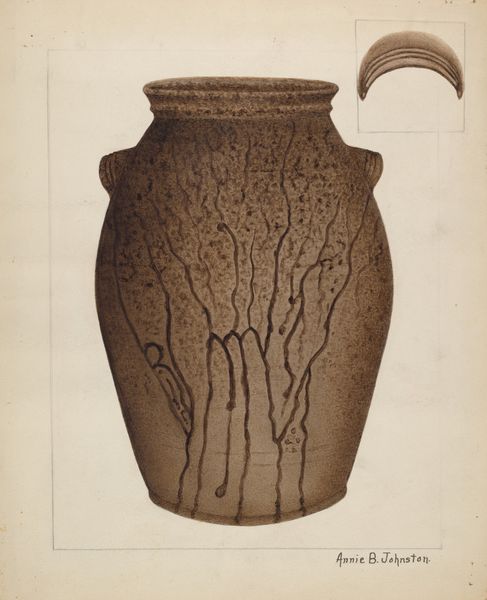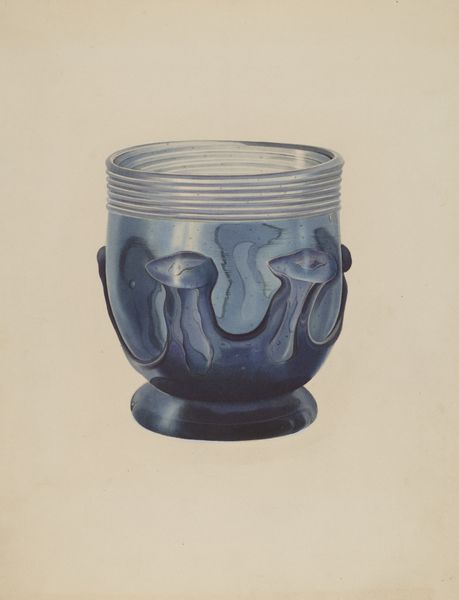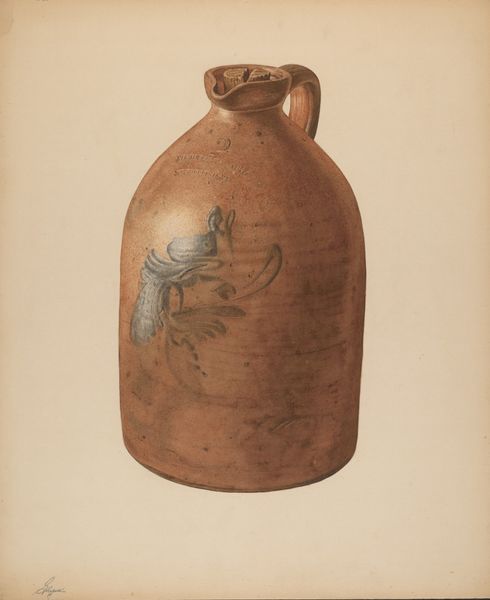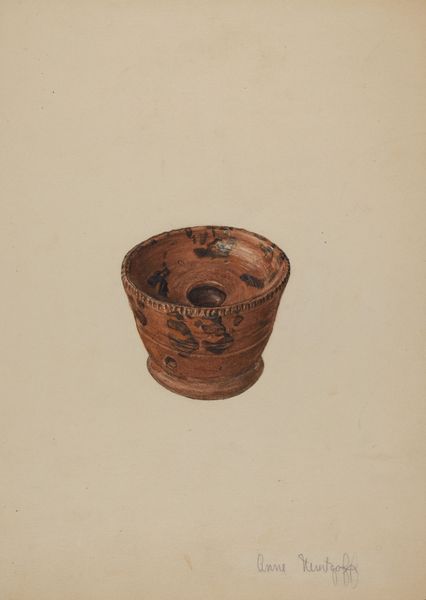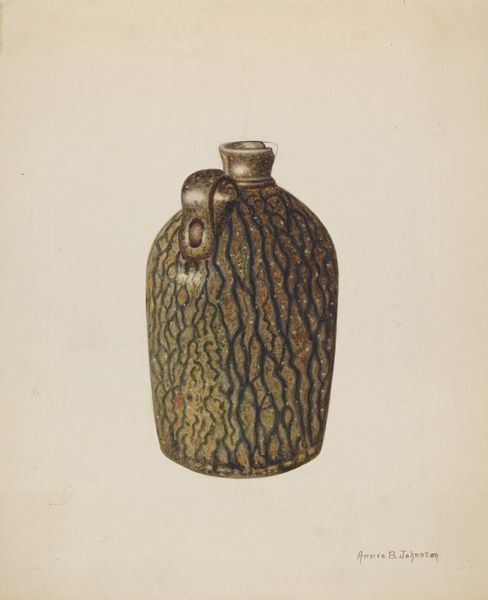
drawing, watercolor
#
pencil drawn
#
drawing
#
watercolor
#
pencil drawing
#
watercolour illustration
#
watercolor
#
realism
Dimensions: overall: 27.1 x 22.8 cm (10 11/16 x 9 in.) Original IAD Object: 16" High 12" Dia.
Copyright: National Gallery of Art: CC0 1.0
Curator: Annie B. Johnston's "Stoneware Jar," created around 1937, presents us with a curious study in watercolor and pencil. It has a groundedness in reality, yet possesses qualities that transcend simple representation. Editor: My first thought is the artist really captures the sheer weight and mass of this object, and how that manifests materially through glaze and form. I’m curious about how utilitarian it is, and whether we see its connection to the lives it may have touched. Curator: Let us begin by noting the play of light and shadow. The upper portion of the jar exhibits a darker tone, masterfully conveying depth, which then gradates into these unique rivulets of glaze streaking down the front. Semiotically, we observe a movement from stable form to fluid decay. Editor: I'm especially drawn to how she’s handled that glaze, or perhaps an imperfection of some kind? The running drips appear intentional and speak to process. The drips suggest time—glaze’s slow journey down the fired form as the potter works—and speak to material realities in unexpected, almost geological ways. Curator: Precisely! We discern a deliberate tension between the fixed, symmetrical shape of the jar and the unpredictable flow of the glaze. Structurally, that tension makes this work so unique. Consider the way Johnston has chosen a simple, utilitarian form, only to subtly disrupt it by way of the glaze itself. Editor: And how might its function tie in with its potential uses? We cannot look at art in a bubble, separate from social meaning. How were these stoneware jars created and who made use of them? We might ask: What stories do those hands and lived experiences impress onto the clay itself? What sort of preservation did they ensure? Curator: An intriguing counterpoint. Ultimately, one finds the real interest lies in the formal elements: how each individual aspect—line, colour, shape, and texture—works to build an aesthetic reality, not to point outwards to its context. Editor: While there's undoubtedly skill on display with tonal gradation, I’m always driven to wonder about the larger, often unseen social frameworks of craft practices in a context. I'm keen to appreciate an image as the byproduct of broader cultural phenomena. Curator: A fascinating glimpse, don't you agree? An insightful interpretation. Editor: It leaves us with so much more to ponder.
Comments
No comments
Be the first to comment and join the conversation on the ultimate creative platform.
